Rosemary Health Benefits and Uses ~ Plant Care Guide
(NaturalNews) Rosemary’s delightful fragrance combined with its pungent taste has convinced many avid cooks to use it in various dishes, including soups and sauces. It is historically known to improve memory by increasing blood flow to the brain and head, which by extension also helps improve concentration. Rosemary also has the ability to improve digestion and seemingly reduce the severity of asthma attacks. In ancient Greece, it had such a formidable reputation to improve memory that students would often put rosemary sprigs in their hair when studying for exams.
Rosemary basically grows on small evergreen shrubs which are part of the Labiatae family, also related to mint. It may come from the Mediterranean but it’s now widely developed in Europe and America’s milder climates.
There are many health benefits associated to this wonderful herb which has been studied by various researchers around the world. Based on some of the accumulated results, rosemary displayed a few other noteworthy qualities besides the ones already mentioned above.
Two of its components, caffeic acid and rosemarinic acid, are potent antioxidant and anti-inflammatory substances that help diminish inflammation, an important factor in asthma, liver disease or heart disease.
The Cancer Research Institute of Slovakia has come to the conclusion that rosemary helps protect DNA from free radical deteriorations, hence a possible aid in the fight against cancer.
Italian researchers noticed that rosemary has a protective effect on protein HSP70. Since protein HSP70 plays an active role in preventing any harm done to the skin, scientists believe that rosemary may be a contributing factor in reducing age-related damages such as wrinkles.
French scientists from the National Institute of Agronomic Research are on record saying that rosemary assists detoxifying enzymes, such as cytochrome P450, glutathione transferase and quinone reductase, in getting rid of toxins found inside the liver.
So what has research shown about rosemary’s effects on the brain?
United Kingdom researchers from Northumbria University discovered that when an amount of 1.8-cineole, a prime chemical found in rosemary oil, makes its way into the bloodstream, the end result leads to improved brain performance.
During the experiment, scientists exposed 20 individuals to various levels of the oil’s aroma and then collected blood samples to confirm how much of the 1.8-cineole each member actually took in. The individuals were then asked to take speed, accuracy and mood tests in order to confirm if rosemary oil showed any positive effects.
It turns out that the more the 1.8-cineole was found in a person’s blood, accuracy and speed performances were also increased. Only mild effects were noticeable in regards to changes in moods.
Dr. Mark Moss was quoted saying that the aroma acts like a medicinal drug. These tests have definitely opened the eyes of many about rosemary’s potential effects on the brain, although some say the results should only be considered for now as preliminary ones.
Sources for this article include:
http://letsgohealthy.blogspot.ca
http://www.whfoods.com/genpage.php?tname=foodspice&dbid=75
About the author:
After spending several years working in property management and being a web consultant for PS Communications, P. Simard is now focusing on being a naturopath in Quebec.
Learn more: http://www.naturalnews.com/041110_rosemary_brain_performace_anti-inflammatory_herbs.html#ixzz3FDkrijfB
Use rosemary leaves for glossy hair and good circulation
http://www.naturalnews.com/032781_rosemary_hair.html
Rosemary oil can be used as a natural meat preservative, and it works better than chemical additives
http://www.naturalnews.com/034573_rosemary_preservative_food.html
Rosemary Plant Care Guide
Chicory ~ Cichorium intybus ~ How to Grow and Benefits
Common chicory, Cichorium intybus, is a somewhat woody, perennial herbaceous plant usually with bright blue flowers, rarely white orpink. Many varieties are cultivated for salad leaves, chicons (blanched buds), or for roots (var. sativum), which are baked, ground, and used as a coffee substitute and additive. It is also grown as a forage crop for livestock. It lives as a wild plant on roadsides in its native Europe, and in North America and Australia, where it has become widely naturalized.
http://en.wikipedia.org/wiki/Chicory

Wild Chicory or Succory is not uncommon in many parts of England and Ireland, though by no means a common plant in Scotland. It is more common on gravel or chalk, especially on the downs of the south-east coast, and in places where the soil is of a light and sandy nature, when it is freely to be found on waste land, open borders of fields and by the roadside, and is easily recognized by its tough, twig-like stems, along which are ranged large, bright blue flowers about the size and shape of the Dandelion. Sir Jas. E. Smith, founder of the Linnean Society, says of the tough stems: ‘From the earliest period of my recollection, when I can just remember tugging ineffectually with all my infant strength at the tough stalks of the wild Succory, on the chalky hills about Norwich….’
—Description—It is a perennial, with a tap root like the Dandelion. The stems are 2 to 3 feet high, the lateral branches numerous and spreading, given off at a very considerable angle from the central stem, so that the general effect of the plant, though spreading, is not rich and full, as the branches stretch out some distance in each direction and are but sparsely clothed with leaves of any considerable size. The general aspect of the plant is somewhat stiff and angular.
The lower leaves of the plant are large and spreading – thickly covered with hairs, something like the form of the Dandelion leaf, except that the numerous lateral segments or lobes are in general direction about at a right angle with the central stem, instead of pointing downwards, as in similar portions of the leaf of the Dandelion. The terminal lobe is larger and all the segments are coarsely toothed. The upper leaves are very much smaller and less divided, their bases clasping the stems.
The flowerheads are numerous, placed in the axils of the stem-leaves, generally in clusters of two or three. When fully expanded, the blooms are rather large and of a delicate tint of blue: the colour is said to specially appeal to the humble bee. They are in blossom from July to September. However sunny the day, by the early afternoon every bloom is closed, its petal-rays drawing together. Linnaeus used the Chicory as one of the flowers in his floral Clock at Upsala, because of its regularity in opening at 5 a.m. and closing at 10 a.m. in that latitude. Here it closes about noon and opens between 6 and 7 in the morning.
Read in Full Here @ A Modern Herbal ~ https://www.botanical.com/botanical/mgmh/c/chicor61.html
~~~~~~~~~~~~~
Chicory is a plant. Its roots and dried, above-ground parts are used to make medicine.
Chicory is used for loss of appetite, upset stomach, constipation, liver and gallbladder disorders, cancer, and rapid heartbeat.
It is also used as a “tonic,” to increase urine production, to protect the liver, and to balance the stimulant effect of coffee.
Some people apply a paste of chicory leaves directly to the skin for swelling and inflammation.
In foods, chicory leaves are often eaten like celery, and the roots and leaf buds are boiled and eaten. Chicory is also used as a cooking spice and to flavor foods and beverages. Coffee mixes often include ground chicory to enhance the richness of the coffee.
How does it work?
Chicory root has a mild laxative effect, increases bile from the gallbladder, and decreases swelling. Chicory is a rich source of beta-carotene.
Read in Full Here @ WebMD ~ http://www.webmd.com/vitamins-supplements/ingredientmono-92-chicory.aspx?activeingredientid=92&activeingredientname=chicory
Information On How To Grow Chicory

Image by pawpaw67
By Bonnie L. Grant
Chicory plant (Cichorium intybus) is an herbaceous biennial that is not native to the United States but has made itself at home here. The plant can be found growing wild in many areas of the U.S and is used both for its leaves and its roots. Chicory herb plants are easy to grow in the garden as a cool season crop. Seeds and transplants are the primary means of growing chicory.
Read in Full Here ~ http://www.gardeningknowhow.com/edible/herbs/chicory/growing-chicory.htm
How to Grow and the Benefits of growing Chicory from Wild Chicory Heirloom Seeds
Read in Full Here ~ http://www.localharvest.org/blog/48630/entry/how_to_grow_and_the
Forage chicory (Cichorium intybus L.) is a perennial plant that is suited to well-drained or moderately drained soils with medium-to high-fertility levels and a pH of 5.5 or greater.
Read in Full Here Forage Chickory ~ http://extension.psu.edu/plants/crops/forages/species/forage-chicory
Natural antibiotics to stockpile now: 10 herbs and foods that kill superbugs
(NaturalNews) Longtime readers of Natural News know that, because of massive over-prescribing by the modern healthcare industry, today’s crop of antibiotics are becoming less and less effective. Another culprit: The increased use of antibiotics in factory-farm animals.
“It is not difficult to make microbes resistant to penicillin in the laboratory by exposing them to concentrations not sufficient to kill them,” warned Alexander Fleming, the creator of the first antibiotic, penicillin, back in 1945 when he received his Nobel Prize for medicine. “There is the danger that the ignorant man may easily underdose himself and by exposing his microbes to non-lethal quantities of the drug make them resistant.”
And while bacteria have been a part of “life” on Earth for humans since the dawn of time, constant exposure to antibiotics — which kill even “good” bacteria — is responsible for the rise of superbugs that are resistant to an increasing number antibiotic drugs.
With that in mind, and before you find yourself in dire need of something that will kill the superbugs, here are 10 herbs and foods that will do the job naturally:
— Honey: In a recently released study, researchers from the Salve Regina University in Newport, Rode Island, reaffirmed that raw honey is one of the best natural antibiotics you can have.
Lead author Susan M. Meschwitz, Ph.D., presented the findings at the 247th National Meeting of the American Chemical Society.
“The unique property of honey lies in its ability to fight infection on multiple levels, making it more difficult for bacteria to develop resistance,” she said.
Honey uses a combination of weapons including polyphenols, hydrogen peroxide and an osmotic effect. Honey is practically an ambidextrous fighter, using multiple modalities to kill bacteria.
— Colloidal silver: As noted by Gregory A. Gore, in his book, Defeat Cancer:
Silver was used 1,200 years ago by Egyptians, Romans, Greeks, sailors, and then by the pioneers who populated our country. They used it for various illnesses and to keep their foods and liquids from spoiling. Prior to 1938, before antibiotics, colloidal silver was used by doctors as their main substance to fight bacteria in a more natural way than through the antibiotics they use today. Antibiotics can harm our kidneys and liver functions. Colloidal silver promotes healing.
— Pascalite: This is a type of bentonite clay found only in the mountains of Wyoming. It possesses remarkable healing powers. When it is used topically, it is known for its ability to draw infections from wounds in a matter of hours or days, thereby bringing about total recovery. The first recorded use of Pascalite was in the early 1930s when a trapper named Emile Pascal set his traps near a cold, clear mountain lake, where he had noticed a large number of animal tracks; after getting some of it on his chapped hands, he noticed some time later that it appeared to help them. So he continued to experiment with the substance and found that it had a number of topical uses, including for burns, minor wounds and infections.
— Turmeric: This herb has been used in Ayurvedic and Chinese medicine for many thousands of years to treat a wide range of infections. The antibacterial and anti-inflammatory qualities have been known to be highly effective in the treatment of bacterial infections. It can also be used topically for MRSA and additional lesions of the skin.
— Oil of Oregano: This is an essential oil known best for its bacteria-killing abilities, as well as controlling staph infections like MRSA. It contains antioxidant, antiseptic, antiviral, antifungal, anti-inflammatory, antiparasitic and pain-relieving properties. In 2001, Science Daily reported on a Georgetown University study which found that oregano oil’s germ-killing properties were nearly as effective as most antibiotics.
— Tea tree oil: This is also a very potent and essential oil that has been shown to be effective in killing antibiotic-resistant MRSA on the skin. One important note: Therapeutic-grade tea tree oil must be used undiluted if it is to be used for this purpose.
— Olive leaf extract: This substance has been used for a number of centuries to battle bacterial infections and is now currently being used as well to fight MRSA infections in some European hospitals. It provides immune system support while fighting antibiotic-resistant infections.
— Garlic: This tasteful seasoning veggie has been used for medicinal purposes around the world for thousands of years. It was even used in the 1700s to ward off the plague. It possesses very potent antibiotic, antiviral and antifungal properties.
— Echinacea: This compound has been used to treat aging and a wide variety of infections for centuries. It was traditionally used to treat open wounds, as well as blood poisoning, diphtheria and other bacteria-related illnesses. Today, it is used mostly to treat colds and flu.
— Goldenseal: This is one of the most popular herbs sold on the American market and has recently gained a reputation as an herbal antibiotic and immune system enhancer. American Indians used goldenseal as a medication for inflammatory internal conditions such as respiratory, digestive and genitourinary tract inflammation induced by allergy or infection, according to Herbwisdom.com.
Sources:
http://science.naturalnews.com
Learn more: http://www.naturalnews.com/045584_natural_antibiotics_superbugs_herbal_medicine.html#ixzz3AQ5vwjOT

Natural Remedies: Stress and Anxiety
Natural Remedies: Stress and Anxiety
We all have times when stress, anxiety, and sleeplessness enter our lives. Here are traditional herbal remedies to help.
First calm thyself. If gardening or another relaxing activity doesn’t calm your nerves and make you sleep well, try a tea (really a tisane, from the Greek for “medicinal brew.)
Herbal Teas
- Teas of chamomile, basil, marjoram, or basil help ease stress. Use about 1 ounce fresh herbs (half of that if dried) for every 2 to 3 cups water.
- A tea of elderberry flowers is considered relaxing to the nerves and is sleep inducing, too. (Caution! Avoid if pregnant.)
- For insomnia, drink bee balm which acts as a mild sedative, calming the nerves and aiding sleep. Take an infusion of 2 teaspoons chopped leaves in 1 cup boiling water.
- Drink rosemary tea to alleviate melancholy or depression.
- Native America tea ingredients for insomnia included lady’s slipper (decocted), yarrow, mullein, hops, and purslane (decocted).
- Valerian tea (or capsules) is a natural sleep aide. In infusions, 1 ounce of the roots in 1 pint boiling water is a common recipe, consumed by wineglass as needed. (Caution: Too high a dose may lead to negative side effects!)
Food
- First, do not eat your final meal late in the evening, and keep the meal light.
- Eating lettuce with your dinner is supposed to be calming, helping you to sleep and have pleasant dreams. Some say you should not have vinegar with your lettuce.
- Mandarin oranges are soporifics, so consider adding them to your evening meal to help insomnia.
- Native Americans reportedly ate raw onions to induce sleep. (They also used a variety of herbal syrups and poultices but they’re a bit too complicated for most of us today.)
- Trying to remain relaxed but alert? Some studies suggest that the smell of apples, apple cider vinegar, or spiced apples have this effect. The right smell can make all the difference.
Massages and Rubs
- Massage the temples with lavender oil.
- A warm bath with a couple of drops of chamomile oil aides sleeping. Add a slash of lavender oil for a relaxing aroma.
- For a relaxing body rub, soak equal parts finely chopped dandelions, burdock (roots and/or aerial parts), yellow dock, and lobelia in 1 quart rubbing alcohol for two weeks. Apply externally.
Bedtime
- Strew lavender in the linen closet to scent your bed sheets with this mildly narcotic herb.
- Try putting a few drops of lavender oil in your nose—gently, with a cotton swab (Q-tip).
- Sprinkle infusions of dill on your pillowcases and quickly iron them dry or fluff them in a clothes dryer.
- Dill will also lull cranky babies to sleep. Add dill infusion to the bath, sprinkle on a baby’s blanket, or use as a hair rinse.
- Sage is considered a “ghost medicine,” used to prevent nightmares. Strew it on the floor or in the bed.
- Keep in mind: Not every fragrant herb is suitable for a good night’s sleep. Some can have the reserve effect. You may wish to consult a herbalist.
A good laugh and a long sleep are the best cures in the doctor’s book.
–Irish proverb
Related Articles
Health benefits of Borage ~ Plant Care Guide
Borage is a beautiful flowering plant that grows in the wild in the Mediterranean. It is cultivated and used widely throughout Europe for its healing properties and for a nice addition to a salad. Borage is also cultivated in the US, where it is more popular as an herbal supplement rather than a food product. The leaves are robust and have medicinal properties and the topper of the plant is a striking blue star shaped flower. The flowers are edible as well and are often found candied for cake decorations or made into sweet syrups. In Italy it is served as a side dish much like a serving of vegetables.
Borage is from the Boraginaaceae family and has the proper name of Borago officinalis. Borage is also known as the Bee plant and Bee Bread because the blue purplish star shaped flower attracts bees all summer long. Throughout history Borage has been used to treat a multitude of ailments and to improve overall health. The Romans would mix Borage tea and wine prior to combat, most likely to fortify themselves for the battle.
There are multiple health benefits one can get from taking Borage as a herbal supplement. One of the most important nutrients in Borage is essential fatty acids, something our body needs for good health. Essential fatty acids must be ingested from diet. An essential fatty acid deficiency can directly affect mood, internal inflammation and various cellular functions. In order for metabolic processes such as cardiovascular functions to work properly, they depend on the proper levels of essential fatty acids in the body. EFA’s also improve hair and nail growth and appearance. Specifically, Borage has very high levels of GLA, gamma linolenic acid, an important essential fatty acid. Borage is often used to boost GLA deficiencies in children as well to ensure proper growth.
Borage is also packed with other healthy nutrients that are great for the body. Borage is a good herbal supplement for women because it contains high levels of calcium and iron, nutrients many women are deficient in. Potassium, Zinc, B and C Vitamins, and beta carotene are packed into the Borage plant making it very nutritional.
The adrenal glands in our body work very hard all day to prepare our body for fight or flight situations, constantly releasing adrenalin into the body. Adrenal fatigue can occur when the body is overstressed. Borage is used to restore the adrenal glands to their natural balance, which in turn creates a calmer body and mind.
Borage is well known for its soothing qualities and has been used to treat nervous conditions. Its natural sedative effects have been used for lifting the spirits and softening the nervous edge some people experience. Borage works well to ease the depression and mood swings often associated with menopause and menstrual cycles as well and is a nice alternative to traditional prescription medications.
There are many current ongoing studies involving the health benefits of Borage. Borage is currently being researched as a possible treatment for rheumatoid arthritis because of it’s anti inflammatory properties. Because of research like this, Borage is now known to reduce itch and dryness associated with certain skin disorders such as eczema and dermatitis.
Borage can be found in a caplet form, or as a liquid extract of the plant. Borage oil is distilled from the seeds of the plant and used topically or taken internally. It is not recommended to be taken long term internally due to the concentration of alkaloids in Borage that can damage the liver. A typical dose of the caplet or extract form is one to two grams per day. The dried leaves can be brewed into a tea, which has been said to have a refreshing cucumber like flavor.
It is not recommended that Borage be taken long term internally because of the concentration of alkaloids in Borage that can damage the liver. Do not take Borage if you are taking anti-coagulants without discussing it with your doctor first. Nausea, cramping, bloating and headache are side effects that Borage can cause, although they are relatively mild.
See Also
Borage Herbal Medicine ~ Borage Uses, Health Benefits And Side Effects
Borage nutrition facts
Borage Alchemy works
Borage Magick
Ruler: Jupiter and Leo
Type: Herb
Other Names: “Barrach” (Celtic for “man of courage”), tailwort, bee’s bread, andstarflower
Magickal Form: Blossoms, dried leaves
Borage is legendary for its spirit-lifting and courage-inducing properties. Celtic warriors drank wine flavored with borage to give them courage in battle, borage leaves and flowers were eaten for courage by Roman soldiers before they went into battle. Medieval knights wore scraves embroidered with the flowers for the same reason.
For courage, tuck a borage blossom in the pocket before any stressful situation, or drink a tea or glass of wine flavored with borage leaves.
Drinking borage tea is said to increase psychic powers and relieve symptoms of depression. Many of the most noted herbalists throughout history have considered it a very effective anti-depressant for the feeling of elation it induces.
Pliny said that borage-flavored wine was the Nepenthe of Homer, which when drunk brings forgiveness. In Elizabethan England, it was considered to lift melancholy; according to Culpeper, borage expells pensiveness and melancholy, and the candied or jellied flowers comfort the heart and spirits of those who are sick from consumption or from the passions of the heart. Gerard recommended eating this herb in a salad for joy and said that a syrup made of the flowers “purgeth melancholy and quieteth the phreneticke and lunaticke person.”
Place the fresh blossoms on an altar to bring luck and power to your spells. Sprinkle crushed dried leaves around the workplace for inspiration and business expansion. Drink the tea to increase psychic abilities.
Eating the flowers in salads aids courage and cheerfulness and ends melancholy. The flowers sprinkled in the bath are good for courage or for Jovian protection, and a cup of borage tea can help with feelings of vulnerability and disjointedness.
In Hoodoo, borage flowers in the house help bring about domestic tranquility. Borage flowers may be used alone or mixed with blue-flowered Corn Flowers, Periwinkle, Rosemary, or Forget-Me-Not. Steep the flowers to make a tea. You can also add this tea to a floor wash for a peaceful home.
You can also sprinkle it at the 4 corners of the property, the 4 corners of the house, the 4 corners of each room, and the 4 corners of the kitchen table, to restore harmony and love to the family.
Place a pinch of dried Borage flowers in each corner of a room where family fights have occurred, with a fifth pinch under the rug at the center of the room.
Because of its connections to Jupiter, this herb is associated with the Hierophant in the tarot deck.
From: Encyclopedia of Magickal Ingredients
Starflower ~ Borage Plant Care Guide @ Auntie Dogma’s
Tip! Borage can be planted now in Northern Hemisphere 🙂
6 Bodily Tissues That Can Be Regenerated through Nutrition
- By Sayer Ji
Green Med Info, June 29, 2012
Straight to the Source
For related articles and more information, please visit OCA’s Health Issues page.
It may come as a surprise to some, especially those with conventional medical training, but the default state of the body is one of ceaseless regeneration. Without the flame-like process of continual cell turnover within the body – life and death ceaselessly intertwined – the miracle of the human body would not exist.
In times of illness, however, regenerative processes are overcome by degenerative ones. This is where medicine may perform its most noble feat, nudging the body back into balance with foods, herbs, nutrients, healing energies, i.e. healing intention. Today, however, drug-based medicine invariably uses chemicals that have not one iota of regenerative potential; to the contrary, they almost always interfere with bodily self-renewal in order to suppress the symptoms against which they are applied.
Despite the outright heretical nature of things which stimulate healing and regeneration vis-à-vis the conventional medical system which frowns upon, or is incredulous towards, spontaneous remission in favor of symptom suppression and disease management, over the course of the past few years of trolling MEDLINE we have collected a series of remarkable studies on the topic…
Nerve Regeneration – There are actually a broad range of natural compounds with proven nerve-regenerative effects. A 2010 study published in the journal Rejuvenation Research, for instance, found a combination of blueberry, green tea and carnosine have neuritogenic (i.e. promoting neuronal regeneration) and stem-cell regenerative effects in an animal model of neurodegenerative disease. Other researched neuritogenic substances include:
1. Curcumin
2. Lion’s Mane Mushroom
3. Apigenin (compound in vegetables like celery)
4. Blueberry
5. Ginseng
6. Huperzine
7. Natto
8. Red Sage
9. Resveratrol
10. Royal Jelly
11. Theanine
12. Ashwaganda
13. Coffee (trigonelline)
There is another class of nerve-healing substances, known as remyelinating compounds, which stimulate the repair of the protective sheath around the axon of the neurons known as myelin, and which is often damaged in neurological injury and/or dysfunction, especially autoimmune and vaccine-induced demyelination disorders. It should also be noted that even music and falling in love have been studied for possibly stimulating neurogenesis, regeneration and/or repair of neurons, indicating that regenerative medicine does not necessary require the ingestion of anything; rather, a wide range of therapeutic actions may be employed to improve health and well-being, as well.
Making the Most of Your Thyme: The Herb’s Amazing Health Benefits and How to Grow
By Antonia
Thyme, a popular herb used to add flavor to a variety of foods, also boasts a range of health benefits. Whether you use it in salads or as a tea, its powerful effects can keep your body and mind going strong. Adding it to your diet is a surefire way to stay in great shape both mentally and physically.

5 Incredible Benefits of Adding Thyme to Your Diet
Improves Respiratory Function
Thyme is one of the best natural ways to improve respiratory problems. In fact, according to The University of Maryland Medical Center, enjoying a cup of thyme tea can help relieve coughs and even shorten the duration of a cold. In Germany, the German Commission E, a group that examines herbal safety and efficacy in the country, has approved thyme as a bronchitis treatment.
Powerful Anti-Microbial Properties
Not only can thyme help preserve foods naturally, but thanks to its essential oil, it can also decontaminate a variety of bacteria. From Staphylococcus aureus to Escherichia coli, research shows that thyme has powerful antimicrobial properties. Studies published in Food Microbiology explain that thyme’s essential oil decontaminated lettuce that had Shigella, which causes diarrhea and other stomach ailments. Even a very small concentration (just 1%) of the oil dropped Shigella’s bacterial levels so low that they could not be detected.
High in Antioxidants
Thyme’s volatile oil, thymol is brimming with antioxidant benefits. Researchers discovered its ability to protect brain cells, paving the way for its role in possible Alzheimer’s disease prevention. Furthermore,thymol (aff link) has also been found to boost the amount of the body’s health fats, specifically omega-3 fatty acids. In turn, problems with brain, kidney and heart cell membranes are lessened.
Rich in Essential Vitamins and Minerals
Thyme is loaded with vitamins and minerals. It’s rich in potassium, iron and calcium, all of which contribute to blood pressure regulation, proper red blood cell formation and distribution of antioxidants in the body. That’s just for starters. The flavorful herb is high in B-complex vitamins, vitamin A, C and folic acid, to name just a few. As such, thyme plays a role in getting rid of free radicals in the body, improving our vision and even protecting us from certain lung and oral cavity cancers.
Helps Relieve Gas and Bloating
It’s often embarrassing and sometimes painful, especially if excess gas is an ongoing issue. Thyme tea to the rescue! Once again, the essential oil in thyme has gas-relieving properties that also help get rid of cramping and bloating.
Did You Know . . .
- Since ancient times, thyme has been enjoyed for culinary, aromatic and medicinal reasons.
- Thyme’s aroma was pleasing to those in ancient Greece, where people burned it as incense in temples.
- “The smell of thyme” was a phrase often used to describe a person or situation that involved courage and admiration, designed to convey utmost praise.
Sources for this article include:
http://blogs.naturalnews.com/making-the-most-of-your-thyme-the-herbs-amazing-health-benefits/
Thyme: Planting, Growing, Harvesting ~ Varieties Here
Discover the wonders of tea tree oil
(NaturalNews) Among the many natural ways to treat infection, tea tree oil is one of the very best. Tea tree oil is an essential oil taken from the leaves of the melaleuca alternifolia, a plant native to Australia and New South Wales. It has a wide variety of uses with strong antiseptic, antibacterial, antiviral, and antifungal properties. Tea tree oil’s antibacterial properties are so effective that it actively attacks and eliminates staff infections, including MRSA.
The tea tree plant has a long history of medicinal use. The aborigines in Australia used tea tree leaves to heal skin infections, wounds, and burns by crushing the leaves and holding them in place with a mud pack.
Tea tree oil effectively treats a variety of conditions. It can be used without a carrier oil, but it is good practice to do a patch test on your skin first, as undiluted tea tree oil can irritate the skin. If the skin is sensitive, then it is necessary to dilute it. A good tea tree oil solution can be made by mixing 5 parts of tea tree oil with 95 parts of water. Please note that tea tree oil should never be taken internally, even in small amounts.
Below are just some of the many ways to effectively use tea tree oil:
Acne: Tea tree oil kills the skin dwelling bacteria that causes acne. Dilute the tea tree oil as directed above and apply to lesions. Another way to apply it is by diluting it with aloe vera gel. To begin with, mix one or two drops to one ounce of the gel.
Boils: Apply undiluted (or diluted if sensitive) tea tree oil directly on the boil with a cotton swab several times a day. Because boils are infectious and can easily spread, make sure to properly dispose of the swab after use, being careful not to touch uninfected areas of your skin.
Athlete’s Foot: Every morning and evening, saturate a cotton ball with tea tree oil (you may need to dilute it) and apply to the affected and surrounding areas. You may want to also apply a tea tree oil enriched moisturizer. Results should be evident in about a week. Tea tree oil is also very effective when treating nail fungal infections.
Oral Thrush and/or Periodontal Disease: Mix one capful of tea tree oil with 12 ounces of water. Swish, gargle, and rinse three times a day. Additionally, when brushing your teeth, you can apply two to three drops to your toothbrush.
Eczema/Psoriasis: It is not advisable to apply undiluted tea tree oil directly, as the affected areas may already be sensitive. Instead, mix 10 drops to 2 tablespoons of olive oil or almond oil and apply directly to the affected areas.
Warts: If the warts are on the feet, apply full strength tea tree oil. (Skin on feet is thicker and less sensitive than other areas.) For other areas of the body, mix a 50/50 solution using water or aloe vera gel. You may need to dilute it further, depending on skin sensitivity.
Insect Bites: Apply full strength to the bite area. Tea tree oil is also an effective insect repellent.
Wound Healing: Moderately apply tea tree oil at a strength of 70 to 100% on the wound at least twice daily.
Lastly, putting a few drops of tea tree oil in bathwater has a relaxing and rejuvenating effect. It will also soothe sore muscles and eliminate persistent body odor.
These are just some of the conditions that tea tree oil treats. Tea tree oil belongs in every natural medicine cabinet.
Sources:
http://www.natural-remedies-review.com/tea-t…
http://altmedicine.about.com/od/herbsuppleme…
http://www.home-remedies-for-you.com/article…
About the author
Luella May is a natural health advocate helping people to heal naturally. Luella is in the midst of editing her ebook, “The 8 Invisible Stains of Our Souls” which will be available in the next few months. She partners with Tony Isaacs, who authors of books and articles about natural health including “Cancer’s Natural Enemy” and “Collected Remedies” Luella contributes to The Best Years in Life website for baby boomers and others wishing to avoid prescription drugs and mainstream managed illness and live longer, healthier and happier lives naturally. Luella co-moderates the CureZone “Ask Tony Isaacs” forum as well as the Yahoo Health Group “Oleander Soup” and hosts her own yahoo group focusing on the natural wellbeing of pets ”
Learn more: http://www.naturalnews.com/033072_tea_tree_oil_remedies.html#ixzz2lQUNRnw1
See Also …
Tea Tree Oil @ webmd
Butterbur ~ Petasites hybridus Plant Care Guide
Common Butterbur (Petasites hybridus) is a herbaceous perennial plant in the family Asteraceae, native to Europe and northern Asia. The flowers are produced in the early spring, before the leaves appear; they are pale pink, with several inflorescences clustered on a 5–20 cm stem. The leaves are large, on stout 80–120 cm tall stems, round, with a diameter of 40–70 cm.
It is also called Bog rhubarb, Devil’s hat and Pestilence wort. Synonyms include P. officinalis, P. ovatus and P. vulgaris.
The herbalist Nicholas Culpeper called it “a great preserver of the heart and reviver of the spirits”. Its many uses in folk medicine include applications as a diuretic and muscle relaxant, and to treat coughs, fever, wounds, stammering, headaches, asthma and stress. Not all of these uses are supported by scientific research.
Preliminary trials have shown a preparation of Butterbur root to be effective in reducing the frequency and severity of migraine attacks.[1] A commercial extract Petasol butenoate complex (Ze 339) has proved helpful for allergic rhinitis[2][3] An evidence-based 2005 systematic review including written and statistical analysis of scientific literature, expert opinion, folkloric precedent, history, pharmacology, kinetics/dynamics, interactions, adverse effects, toxicology, and dosing is available from the Natural Standard Research Collaboration.
~~~~~~~~~~~
How to Grow Butterbur
The butterbur (petasites hybridus) is a perennial plant with Asian origins. It is best known for it’s herbal qualities. Root extracts from the plant are often used to treat pain, spasms, fever, migraines and asthma. Another common name for the butterbur plant is “sweet coltsfoot.” The plant grows best in wet marshy soil. The butterbur blooms in the spring and grows lush foliage in the summer months. The plant thrives in U.S. Department of Agriculture Plant Hardiness Zone 4 to 9. On average, the plant grows up to 3 feet wide and 9 feet tall.
1 Locate a spot that is well moistened to plant your butterbur seeds. For best results, the planting location should be lightly shaded or partially shaded. Be sure the area has enough room for your butterbur to spread and grow.
2 Check the planting location to ensure the soil has a pH level ranging from 5.6 to 7.8. The soil can be of a sandy, loamy or clay make-up.
3 Plant your butterbur seeds in a hole that is ¼ to ½ inch deep. Cover your seeds with soil.
4 Plant the remainder of your butterbur seeds. When planting, leave at least 5 feet of space between each hole. The extra space is needed because the butterbur is a wide spreading plant. The leaves alone can extend up to 2 feet wide. Once it starts to grow, it rapidly spreads throughout your garden.
5 Feed your butterbur a dose of fertilizer once every 25 days during the summer months. Be sure the fertilizer is has the proper balance of nitrogen, phosporus and potassium. For maximum growth, use a fertilizer ratio of 16-4-8.
6 Water your butterbur plant once every two to three weeks to ensure the soil remains moist. If the soil still dries out between waterings, more frequent waterings are necessary.
Things You Will Need
- Fertilizer
- Water
Warning
- Only butterbur root extract that has been chemically processed and detoxified can be safely consumed internally. Otherwise, all parts of the plant are highly poisonous and should never be internally consumed.
References
- National Center For Complimentary & Alternative Medicine: Butterbur
- Plants For A Future: Petasites Hybridus
- Environmental Graffiti: Butterbur – The Versatile Plant with a Rich History in Herblore
- Brians Botanicals: Petasites Hybridus
- Dave’s Garden: Plantfiles – Japanese Butterbur
- Wild Chicken: Petasites Hybridus
- American Headache Society: Information For Health Care Professionals
About the Author
Faizah Imani, an educator, minister and published author, has worked with clients such as Harrison House Author, Thomas Weeks III, Candle Of Prayer Company and “Truth & Church Magazine.” Her dossier includes JaZaMM WebDesigns, assistant high-school band director, district manager for the Clarion Ledger and event coordinator for the Vicksburg Convention Center.
~~~~~~~~~~~
See Also …
Butterbur: The Versatile Plant with a Rich History in Herblore
herbs2000.com
Petasites hybridus –
How to Grow Butterbur
herbs at a glance

Dill ~ Anethum graveolens ~ Lao coriander Plant Care Guide
An essential ingredient in pickling, dill is also commonly added to soups, stews, and salad dressings. This easy-to-grow annual herb is not only beautiful, but it also attracts beneficial insects to the garden.
Toxicology
- Antibacterial activity against Staphylococcus aureus[11]
- Antimicrobial activity against Saccharomyces cerevisiae
Dill (Anethum graveolens), also known as Lao coriander,[1][2] depending on where it is grown, is either a perennial or annual herb. It is the sole species of the genus Anethum.
When used as a companion planting, dill draws in many beneficial insects as the umbrella flower heads go to seed. Fittingly, it makes a good companion plant for cucumbers. It is a poor companion for carrots and tomatoes.[8]
more information here at original source
~~~~~~~~~~~~~~
Planting, Growing Harvesting Dill
Botanical name: Anethum graveolens @ Old farmers
Plant type: Herb
Sun exposure: Full Sun
Soil type: Loamy
Dill is an annual, self-seeding plant with feathery green leaves. It is used most commonly in soups, stews, and for pickling. Dill is easy to grow and attracts beneficial insects to your garden, such as wasps and other predatory insects.
Planting
- Sow dill seeds about 1/4-inch deep and 18 inches apart in rich soil, then gently rake the seeds into the soil. The soil should be around 60 to 70ºF for best results.
- Dill does not grow well when transplanted, so start the seeds fresh in the garden in early summer. Make sure to shelter the plants from strong winds.
- After 10 to 14 days, the plants should appear in the soil. Wait another 10 to 14 days, then thin the plants to about 12 to 18 inches apart.
- In your garden, plant dill next to cabbage or onions, but keep the dill away from carrots.
Care
- Water the plants freely during the growing season.
- In order to ensure a season-long fresh supply of dill, continue sowing seeds every few weeks. For an extended harvest, do not allow flowers to grow on the plants.
- If the soil remains undisturbed throughout the growing season, more dill plants will grow the next season.
Pests
- Leaf spot and occasionally a few other types of fungal leaf and root diseases
Harvest/Storage
- As soon as the plant has four to five leaves, you can start harvesting. Pinch off the leaves or cut them off with scissors.
- If you have a lot of plants, you can pinch off entire stalks.
Recommended Varieties
- Fernleaf dill, which is good in potato salads, cucumber soup, and fish dishes
Recipes
Wit & Wisdom
For sweeter breath, chew dill seeds.


Sweet Cicely (Myrrhis odorata) ~ Osmorhiza Plant Care Guide
Cicely /ˈsɪsəli/ or Sweet Cicely (Myrrhis odorata) is a plant belonging to the family Apiaceae, native to Central Europe;[1] it is the sole species in the genus Myrrhis. It is a tall herbaceous perennial plant, depending on circumstances growing to 2 m [6 ft 6 in] tall. The leaves are finely divided, feathery, up to 50 cm long. The flowers are white, about 2–4 mm across, produced in large umbels. The seeds are slender, 15–25 mm long and 3–4 mm broad.
Cultivation and uses
Its leaves are sometimes used as a herb, either raw or cooked, with a rather strong taste reminiscent of anise; it is used mainly in Germany and Scandinavia. Like its relatives anise, fennel, and caraway, it can also be used to flavour akvavit. Its essential oils are dominated by anethole. The roots and seeds also are edible. Additionally, it has a history of use as a medicinal herb.

How to Grow Sweet Cicely
Sweet cicely is a very hardy perennial herb that is not widely known or grown. It loves cool weather and grows best in the cool climate of the far north. It has a slight anise flavor that pairs well with cooked fruits. Although it can reseed itself prolifically in the garden, the seeds only remain viable for a short time. If you’re growing it from seed, make sure the seeds are fresh.
Step 1
Pick a spot in partial shade. Sweet cicely is one of the few herbs that like rich, moist, fertile soil.
Step 2
Improve the soil. Add at least 2 inches of compost and 2 inches of peat moss to the surface of the soil in the chosen site. Incorporate these by turning over the soil with a spade. Rake the area smooth.
Step 3
Plant seeds of sweet cicely in mid to late fall. The seeds of this herb need freezing and thawing cycles in order to germinate. Plant seeds ½ inch deep and 4 inches apart. Do not water or mulch the soil. The seeds will germinate the following spring.
Step 4
Thin the seedlings the following spring when they are 2 inches high so they stand 12 to 18 inches apart.
Step 5
Mulch the planting bed with a 3-inch layer of hay, straw or shredded leaves.
Step 6
Provide sweet cicely with the equivalent of 1 inch of rainfall per week.
Step 7
Top dress the soil around your sweet cicely every spring with compost. Pull back the mulch and spread a 1- to 2-inch layer of compost around the plants. Replace the mulch.
Step 8
Dig up and divide the roots of sweet cicely every 4 to 5 years. Set the plant on a hard surface and sever the roots with a spade. Replant the divisions, spacing 12 to 18 inches apart.
Myrrhis odorata – (L.)Scop.
Guide to Growing Myrrhis – Cicely

~~~~~~~~~~~~~
 Osmorhiza is a genus of perennial herbs, known generally as Sweet Cicely or Sweetroot. Most species are native to North America, but some grow in South America and Asia. Some species are used for medicinal purposes, but have dangerous lookalikes. The seeds of this plant have barbs on the end allowing them to stick to clothing, fur, or feathers.
Osmorhiza is a genus of perennial herbs, known generally as Sweet Cicely or Sweetroot. Most species are native to North America, but some grow in South America and Asia. Some species are used for medicinal purposes, but have dangerous lookalikes. The seeds of this plant have barbs on the end allowing them to stick to clothing, fur, or feathers.
Species
- O. aristata
- O. berteroi (Tapering Sweetroot, Mountain Sweet Cicely, Mountain Sweetroot)
- O. brachypoda (California Sweet Cicely)
- O. claytonii (Clayton’s Sweetroot, Sweet Cicely)
- O. depauperata (Bluntseed Sweetroot)
- O. glabrata
- O. longistylis (American Sweet Cicely, Sweet Cicely, White Cicely, Longstyle Sweetroot, Aniseroot, Licorice Root, or Wild Anise)
- O. mexicana (Mexican Sweet Cicely)
- O. occidentalis (Western Sweetroot)
- O. purpurea (Purple Sweetroot)
Osmorhiza longistylis (Torr.) DC. longstyle sweetroot
Osmorhiza claytonii
~~~~~~~~~~~~~~~~~~~~~~~

Cilantro vs Culantro ;) ~ How to Grow Either/or Both
Outside of Latin communities these two herbs are often confused. Erngium foetidum (culantro) is related to the Sea Holly flower species.
Coriandrum sativum (cilantro ~ coriander) is also called chinese parsley, totally different genus, same family. The leaves are called cilantro and are often confused with culantro. The seeds are the coriander.
~~~~~~~
Eryngium foetidum is a tropical perennial and annual herb in the family Apiaceae. Common names include culantro, Mexican coriander and long coriander. It is native to Mexico and South America, but is cultivated worldwide. In the United States, where it is not well known outside Latino communities, the name culantro sometimes causes confusion with Coriandrum sativum (also in Apiaceae), the leaves of which are known as cilantro, and which culantro is said to taste like.[1]
also a medicinal plant click here for more info @ original link
****************
coriander/cilantro flowers
Coriander (Coriandrum sativum), also known as cilantro, Chinese parsley or dhania,[1] is an annual herb in the family Apiaceae. Coriander is native to regions spanning from southern Europe and North Africa to southwestern Asia. It is a soft, hairless plant growing to 50 cm (20 in) tall. The leaves are variable in shape, broadly lobed at the base of the plant, and slender and feathery higher on the flowering stems. The flowers are borne in small umbels, white or very pale pink, asymmetrical, with the petals pointing away from the centre of the umbel longer (5–6 mm) than those pointing towards it (only 1–3 mm long). The fruit is a globular, dry schizocarp 3–5 mm (0.12–0.20 in) in diameter.
click here for more information @ original link
**********************
Coriander and Cilantro Plant Care Guide @ Old Farmer’s
Growing Culantro @ Bonnie Plants
See Also …
Culantro: A Much Utilized, Little Understood Herb
Christopher Ramcharan


Chamomile Plant Care Guide
Chamomile Plant Care Guide
There are many reasons you will want to include chamomile in your herb garden. This popular herb not only makes a soothing tea, but its daisy-like flowers and sweet scent make it a must have for your flower garden. Though it started out in Europe, this fragrant beauty has quickly spread world-wide and is easy to add to your collection as well.
Before You Plant
Choose the Right Type of Chamomile:
- There are two main types of chamomile, each with its own distinct properties.
- German chamomile is an annual herb that reaches heights of 2-3 feet.
- Roman chamomile is a perennial herb that only reaches a height of 4-12 inches, making it a good candidate for ground cover.
Find a Suitable Place:
- Chamomile plants need an area that receives full sun.
- If space is limited, consider growing this herb in a container either indoors or on a patio.
- Both herb gardens and flower gardens make great homes for the chamomile plant.
Prepare the soil:
- Proper drainage is important, but soil needs to hold moisture for the plant to grow.
- Soil should be average to rich in quality. Amend poor soil by working in rotted compost or organic matter.
- The acidity of the soil is another factor to consider. Chamomile will grow in a wide range of acidic soil anything with 5.6 – 7.5 pH. There are soil testing kits available at most gardening or home supply stores, or you can have your soil tested by a professional to find out if any adjustments are necessary.
Planting Chamomile
What You Will Need:
- Chamomile seeds
- Prepared soil
- Fertilizer
- Mulch
Steps for Planting Chamomile:
- Properly prepare the soil before planting.
- Seeds need light to germinate, so rather than sowing the seeds, broadcast them onto moist soil in the spring after the last frost.
- Allow one to two weeks for the plants to germinate.
- When seedlings have developed, thin the plants to 6 inches for ground cover or 18 inches for decorative plants.
- Apply fertilizer regularly to achieve maximum plant growth.
- Water regularly to keep the soil moist. Placing mulch around the plants will help to retain moisture.
Growing/Harvesting Chamomile
What You Will Need:
- Garden clippers or scissors
- Tray
- Wire rack
Steps for Care and Maintenance:
- Remove all dead flowers, otherwise known as deadheading, regularly to keep new blossoms forming.
- Harvest flowers by cutting them off as they reach their peak bloom; use fresh in tea or dry for winter use.
- To dry, place flowers on a tray and allow to dry thoroughly in a cool, dark place. Store in an air-tight container.
- In the fall, cut the plant down and cover with mulch to provide protection from harsh winter weather.
- Once planted, this plant will self-seed to produce new plants each year.
Additional Tips and Advice
- Since the flowers of the chamomile plant are eaten, avoid using any pesticides or sprays. If pests become a problem, try an organic treatment. Be sure to check the label carefully.
- Flowers can be used to make fresh tea or combined with other teas to make a delicious herbal blend. It also makes a great addition to punch as it can be served hot or cold.
- Use chamomile to make a hair rinse.
- Chamomile is often used to treat aches and the tea is often used to help with upset stomachs.
- Toothaches can also be treated by grinding the chamomile and mixing with a little water to form a paste. Apply to the irritated tooth for relief.
******************
See Also …
How to Grow and Care for Chamomile Flowers in Containers Here
How to Grow Chamomile

Basil ~ Ocimum basilicum Plant Care Guide
Planting Growing Harvesting ~ Tomato Companion
Botanical name: Ocimum basilicum
Plant type: Herb
Sun exposure: Full Sun
Soil type: Loamy
Basil is a leafy, fragrant annual with a bushy appearance. The most common type of basil is sweet basil; other types include purple basil (less sweet than common basil), Lemon basil (lemon flavor), and Thai basil (licorice flavor). Basil is easy to grow and works well in Italian dishes, but it only grows in the summer, so plan accordingly.
Planting
- To get a head start, start the seeds indoors 6 weeks before the last spring frost.
- Ensure your outdoor site gets 6 to 8 hours of full Sun daily; soil should be moist and well-drained.
- After the last frost date, plant the seeds/seedlings in the ground about 1/4-inch deep. The soil should be around 70ºF for best growth.
- Plant the seeds/seedlings about 10 to 12 inches apart. They should grow to about 12 to 24 inches in height. For smaller plants, plant farther apart (about 16 to 24 inches).
- During the dry periods in summer, water the plants freely.
- Remember to pinch out the flower heads as soon as they appear to make sure that the leaves will continue growing.
- If you’re planning on cooking with these plants, plant in clean soil (don’t use fertilizers that leave harmful residues) and grow them away from driveways and busy streets so that exhaust won’t settle on the plants.
- Tomatoes make great neighbors for basil plants in the garden.
Care
- Make sure that the soil is moist. Basil plants like moisture. If you live in a hot area, use mulch around the basil plants (the mulch will help keep the soil moist).
- Make sure to pick the leaves regularly to encourage growth throughout the summer.
- After 6 weeks, pinch off the center shoot to prevent early flowering. If flowers do grow, just cut them off.
- If the weather is going to be cold, be sure to harvest your basil beforehand, as the cold weather will destroy your plants.
Pests
- Aphids
- Variety of bacterial and fungal leaf, stem, and root diseases
Harvest/Storage
- After the seedlings have their first six leaves, prune to above the second set.
- Every time a branch has six to eight leaves, repeat pruning the branches back to their first set of leaves.
- The best time to harvest is right when the plant starts to bud (before the flowers bloom).
- Basil is most pungent when it is fresh.
- If pruned regularly, twelve basil plants will produce 4 to 6 cups of leaves per week.
- The best method for storing basil is freezing. Freezing will prevent the plant from losing any of its flavor. To quick-freeze basil, dry whole sprigs of basil and package them in airtight plastic bags.
- Another storage method is drying the basil (although some of the flavor will be lost). Pinch off the leaves at the stem and place them in a well-ventilated and shady area. After 3 to 4 days, if the plants are not completely dry, place them in the oven on the lowest heat setting with the door slightly open. Remember to turn the leaves (for equal drying) and check them frequently.
Recommended Varieties
- Cinnamon basil, to add a hint of cinnamon to a dish
- Purple basil, to add some nice color to your garden (when steeped in white vinegar, it creates a beautiful color)
- Thai basil, to add a sweet licorice flavor to a dish.
Recipes
Wit & Wisdom
Where salt is good, so is basil. –Italian saying

Sage ~ Salvia officinalis Plant Care Guide
Sage ~ Salvia o. Plant Care Guide
Botanical name: Salvia officinalis
Plant type: Herb
USDA Hardiness Zones: 5, 6, 7, 8, 9
Sun exposure: Full Sun
Sage is a hardy perennial with soft, grayish green leaves. Its flower colors vary; they can be purple, pink, blue, or white. Common sage is used most commonly for cooking; it’s a classic in stuffing.
Planting
- Sage can grow from seeds, but the best way to grow high-quality sage is from cuttings from an established plant.
- You can start the seeds/cuttings indoors 6 to 10 weeks before the last spring frost.
- Plant the seeds/cuttings in well-drained soil 1 to 2 weeks before the last spring frost.
- Plant the seeds/cuttings 24 to 30 inches apart. For best growth, the soil should be between 60º and 70ºF. Plants should grow to be between 12 and 30 inches in height.
- In the garden, plant near rosemary, cabbage, and carrots, but keep sage away from cucumbers.
Care
- Be sure to water the young plants regularly until they are fully grown so that they don’t dry out.
- Prune the heavier, woody stems every spring.
- It’s best to replace the plants every 4 to 5 years to ensure the best quality.
Pests
- Rust
- Powdery mildew
- Stem rot
- Fungal leaf spots
- Whiteflies
- Aphids
- Spider mites
Harvest/Storage
- During the first year, harvest lightly to ensure that the plant grows fully.
- After the first year. be sure to leave a few stalks so that the plant can rejuvenate. If fully established, one plant can be harvested up to three times in one season.
- Sage’s flavor is best when fresh, but it can be stored frozen or dried. To dry, leave the branches in the sun; once dried, remove the leaves and store them in an airtight container.
Recommended Varieties
- Tricolor sage, for a bit of color in the garden (yellow, mauve, and sage green)
Recipes
- Bagged Roast Turkey With Cornbread, Chestnut, and Sage Stuffing
- Ravioli in a Sage and Brown-Butter Sauce
- Cheese Crackers with Sage
Wit & Wisdom
Anyone who has sage planted in their garden is reputed to do well in business.
*******
- ‘Alba’, a white-flowered cultivar
- ‘Aurea’, golden sage
- ‘Berggarten’, a cultivar with large leaves, which rarely blooms, extending the useful life of the leaves
- ‘Extrakta’, has leaves with higher oil concentrations
- ‘Icterina’, a cultivar with yellow-green variegated leaves
- ‘Lavandulaefolia’, a small leaved cultivar
- ‘Purpurascens’ (‘Purpurea’), a purple-leafed cultivar
- ‘Tricolor’, a cultivar with white, yellow and green variegated leaves
‘Icterinaand ‘Purpurascens have gained the Royal Horticultural Society‘s Award of Garden Merit.






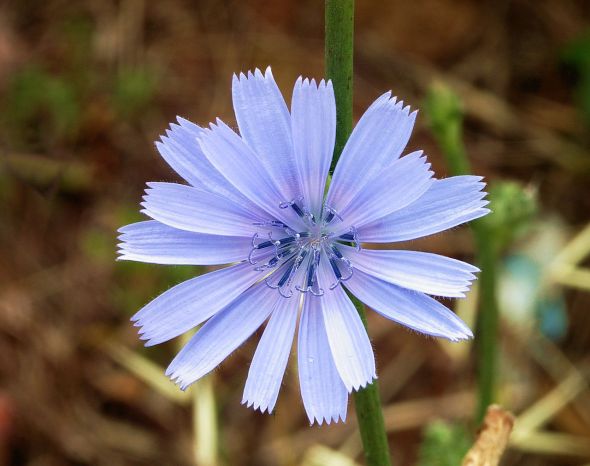

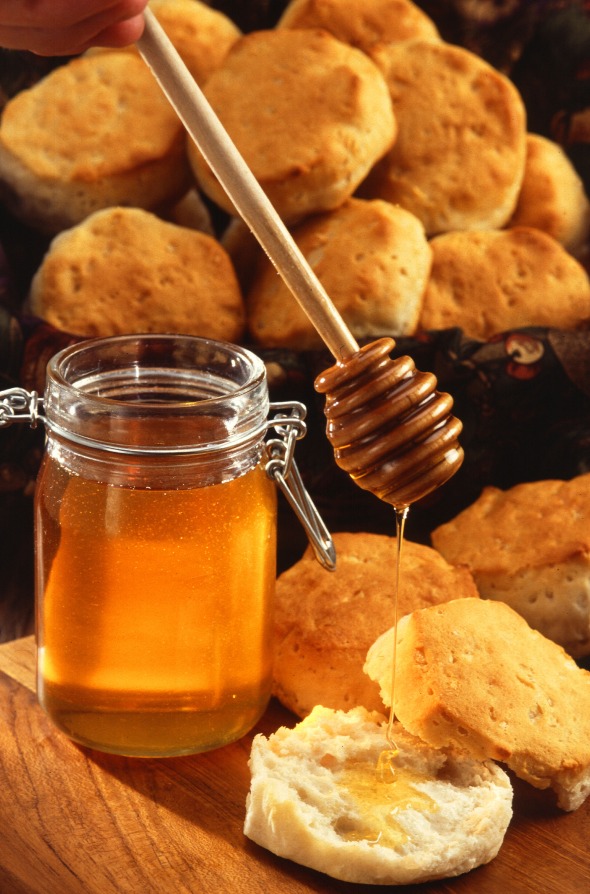
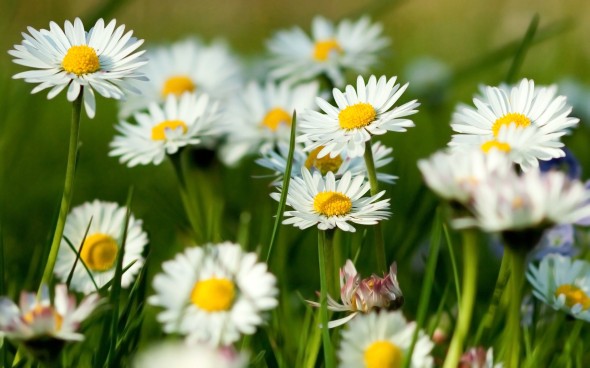

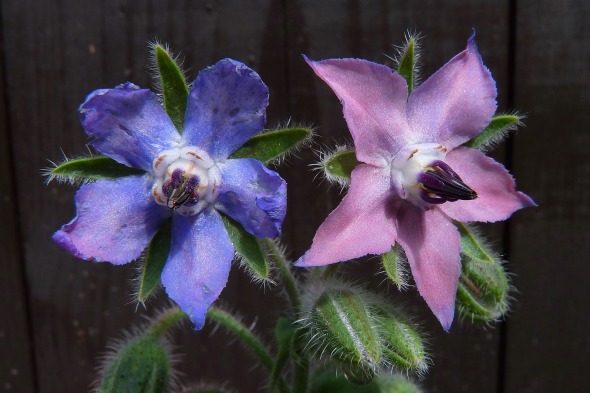

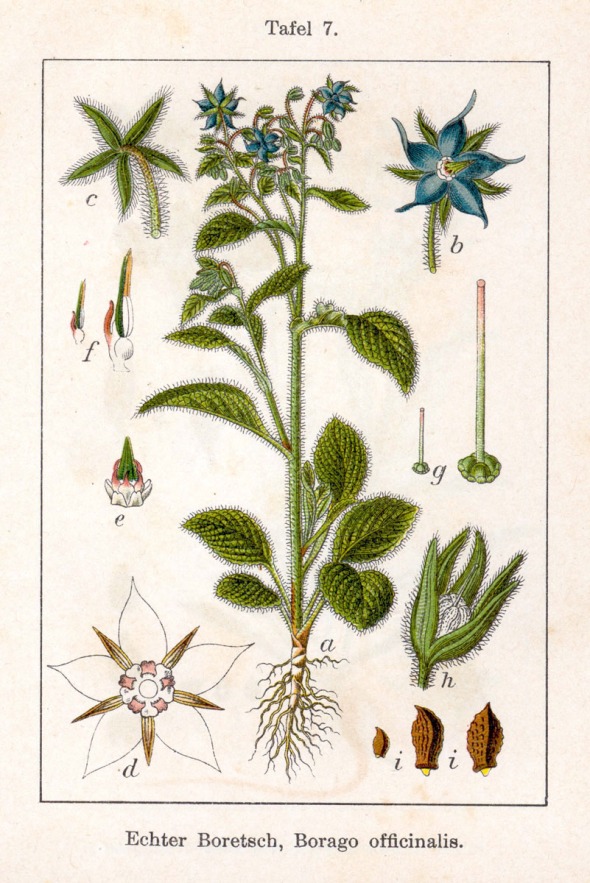
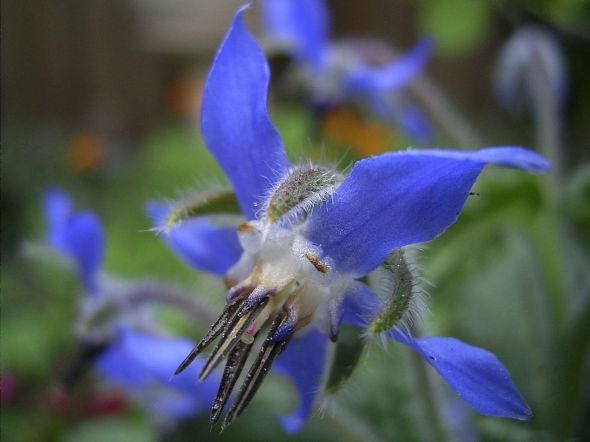
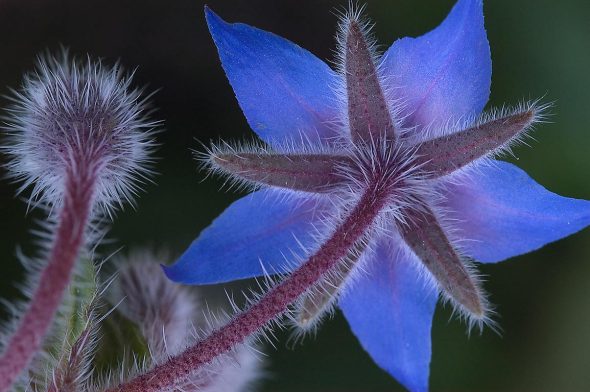










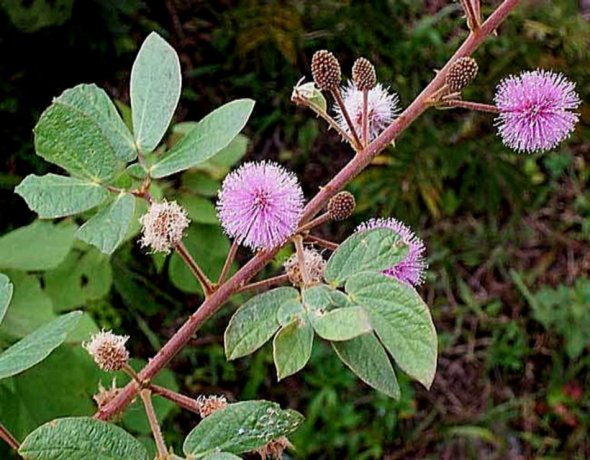










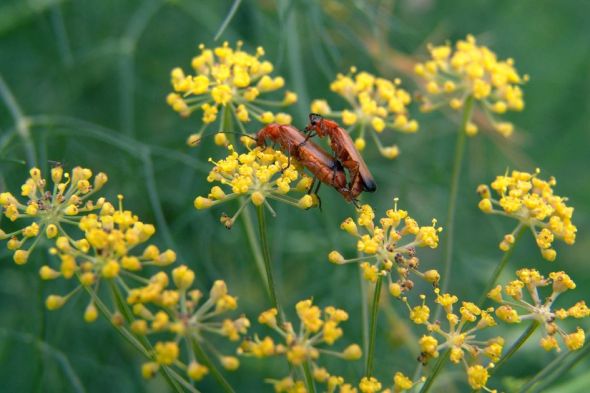




























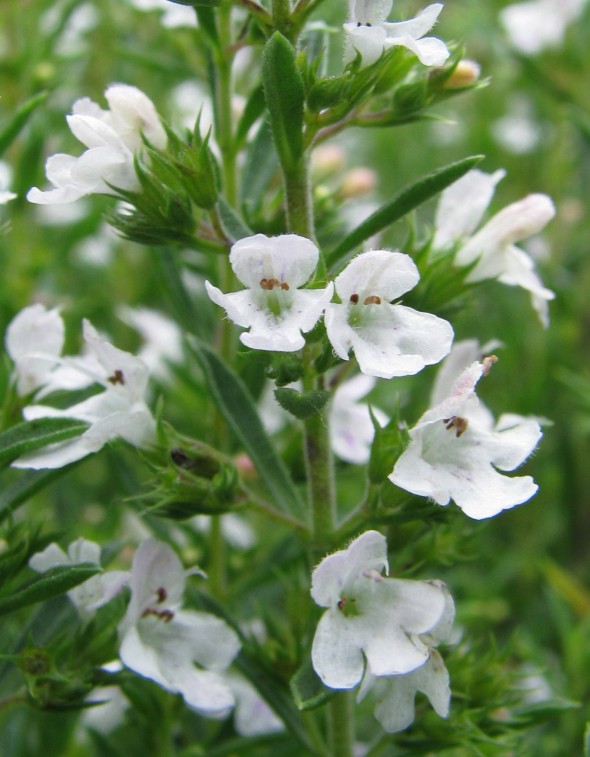
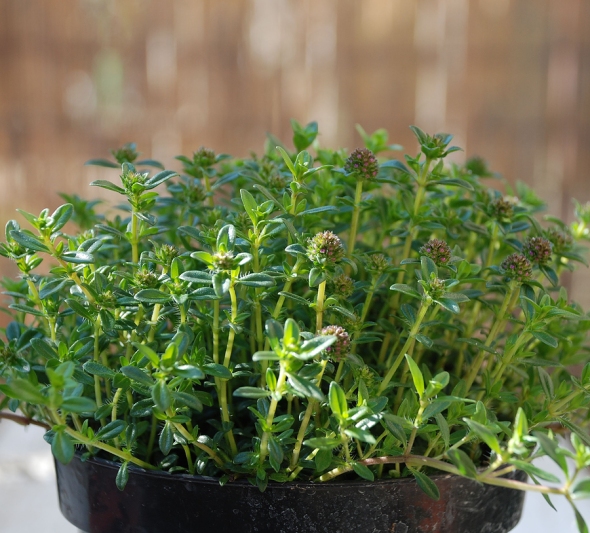
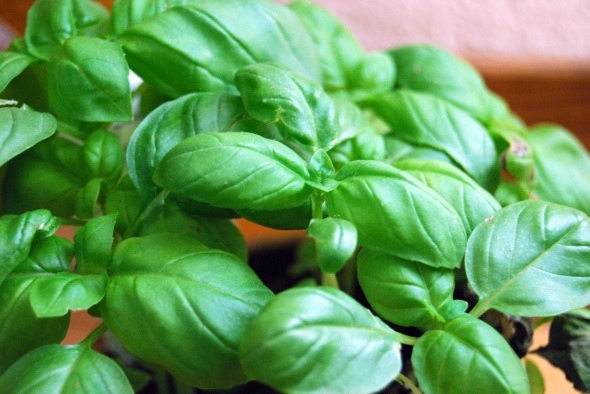






Recent Comments